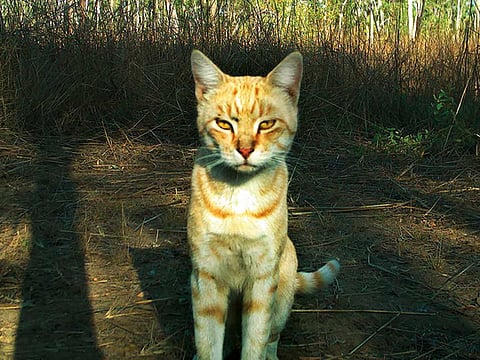New Zealand unveils plan to eradicate feral cats after years of pussyfooting
Campaign depends on how well government balances conservation with animal welfare concerns

New Zealand’s government has officially added feral cats to its “Predator Free 2050” initiative, marking a major escalation in its efforts to protect native wildlife.
Conservation Minister Tama Potaka described feral cats as “stone-cold killers,” arguing that they cause extensive damage to New Zealand’s unique ecosystems.
Highlights
New Zealand is taking a much tougher line on feral cats in order to protect its native wildlife.
The campaign elevates feral cats to a national eradication target under the Predator Free 2050 program.
The success of the campaign will hinge on technology, public cooperation.
Populations of native birds, bats, lizards, and insects are particularly vulnerable to predation by wild cats.
Why the move matters
Wit With feral cats now part of the Predator Free 2050 target, a nationally coordinated drive, local conservation groups will be able to access dedicated funding and resources, according to local media.
Research and innovation: The inclusion will boost research into more effective and humane control methods, including technologies and baits.
Public willingness
During recent public consultation, more than 90% of nearly 3,400 submissions supported stronger feral cat management.
The Department of Conservation (DOC) is already testing a new meat-based bait as a control method.
DXC Production Field trials use a two-step system: first a non-toxic “cue” bait, then a second application containing 1080 (sodium fluoroacetate), a poison already used for other pests.
According to DOC, this bait has shown strong attractiveness to feral cats but low interest from native species such as kiwi or deer.
The agency will further assess risks to other taonga species before field deployment.
Domestic cats not targeted
Potaka clarified that the policy does not include pet cats. Responsible pet ownership — such as desexing, microchipping, and keeping cats indoors —remains a key part of the approach.
The New Zealand Veterinary Association (NZVA) has backed the decision, saying it aligns with earlier advocacy for unified national pest control and better welfare standards.
Timeline
A revised Predator Free 2050 strategy, including detailed priorities for tackling feral cats, is expected in March 2026.
Feral cats are widespread across New Zealand — on farms, forest edges, and remote islands.
Estimates suggest there may be millions of them. Because of their predatory behaviour and ability to spread toxoplasmosis, they pose serious threats not just to wildlife, but also to human health and livestock.
Challenges & controversies
Some of the proposed eradication methods — such as aerial poisoning—are likely to raise ethical and logistical concerns.
The use of 1080 or sodium fluoroacetate, a highly toxic vertebrate poison used for pest control, in particular has a fraught history in New Zealand conservation, and some animal welfare advocates argue for more “humane” approaches.
There’s also a political aspect: historically, feral cats were not included in the Predator Free 2050 plan, in part because of strong cat-owning constituencies.
The government’s decision now represents a significant shift.
What’s next
The DOC will continue refining its bait technology and testing in varied habitats.
The revised Predator Free 2050 strategy (March 2026) will lay out concrete targets and funding for feral cat control.
Policy discussions may follow on how to manage domestic cats more responsibly, including potential new regulations around microchipping, containment, or mandatory desexing.
Sign up for the Daily Briefing
Get the latest news and updates straight to your inbox



